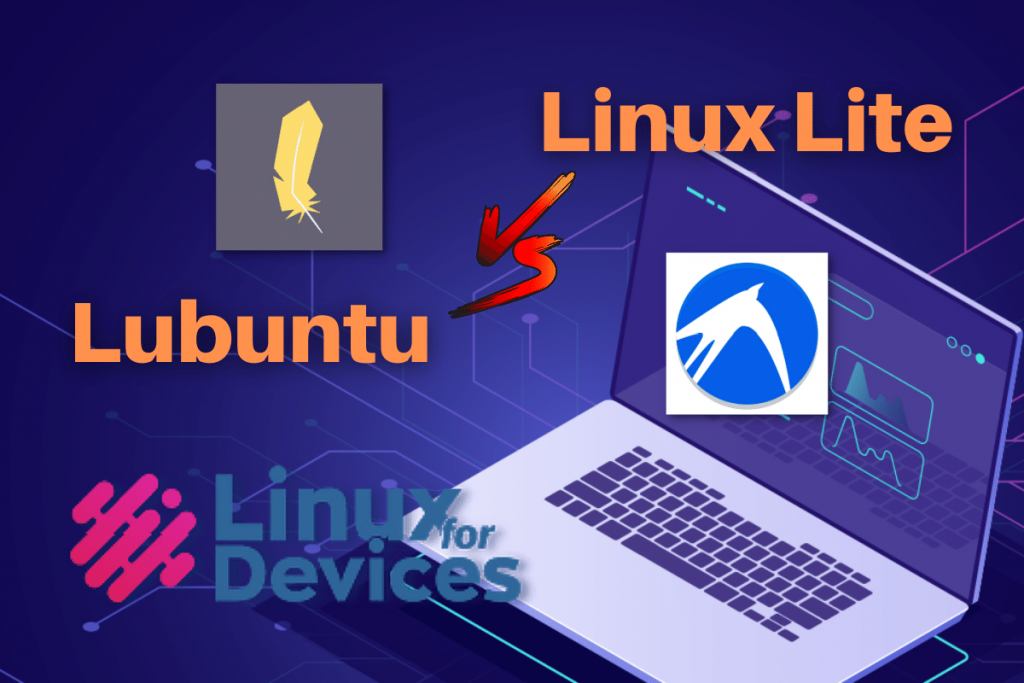Hello folks! In this tutorial, we are going to discuss the key differences between the two popular Linux distributions- Linux Lite vs Lubuntu. So, let’s get started!
Also read: Ubuntu vs Lubuntu: Top 8 Differences Between Ubuntu and Lubuntu
Linux Lite vs Lubuntu: Head to Head Comparison Table
| Linux Lite | Lubuntu |
| Debian-based | Ubuntu-based |
| XFCE as the default desktop environment | LXDE or LXQt desktop environment. |
| Low resource usage | Low resource usage |
| Built with developers in mind | Built for regular use |
| The latest release is Linux Lite 5.4. | The latest release is Lubuntu 21.04. |
| Official website – www.linuxliteos.com. | Official website – lubuntu.me. |
Linux Lite vs Lubuntu: Comparing the individual use-cases
Now, let’s see the comparison of the individual features of both the Linux distros in detail.
1. System Requirements
Although both of these operating systems are lightweight versions of Linux or Unix-based operating systems, they have their own system requirements.
Linux Lite has the following system requirements:
- Processor: 1 GHz
- RAM: 768 MB
- Disk Space: 8 GB
- Screen Resolution: 1024 x 768
Lubuntu has the following system requirements:
- Processor: AMD K8 or Pentium M or Pentium 4
- RAM: 512 MB
- Disk Space: 8 GB
- Screen Resolution: 1024 x 768
2. Ease of Installation
As we know Linux Lite and Lubuntu both are lightweight Linux distros. Hence they are very easy to install on the system (laptop or desktop). There are no complications involved in its installation process. We just have to download their respective ISO image file from their official websites (www.linuxliteos.com) or (lubuntu.me) and then follow the on-screen instructions to complete its initial set-up.
Downloading and installing Linux Lite takes less time as compared to Lubuntu. A study has shown that the installation process of Linux Lite is very very fast as it takes 1 minute or 30 seconds or even less than that.
3. Built in Apps and Software
Linux Lite comes with the following apps:
- Libre Office
- Firefox
- Mozilla Thunderbird
- VLC Media Player
- GIMP
- Virtual Box
Lubuntu offers the following apps by default:
- Firefox
- MPlayer
- LightLocker
- Simple Scan
- Audacious (word processor)
- Galcalculator (calculator)
- Evince (pdf reader)
4. User Interface
Linux Lite uses Xfce as its default user interface which is a lightweight desktop environment. It is customizable and user-friendly. It is good enough to give a new and customized look to your old PC’s interface. In Linux Lite, we can control and customize all the settings like desktop icons, number of icons and folders, panel appearance and location, menu bar, etc.
Lubuntu also uses a similar friendly user interface that is more like a usable graphical interface. Lubuntu uses LXDE or LXQt as its desktop environment. LXDE is an open-source desktop environment and is widely known for its low system requirements. It also provides some lightweight alternative applications which allow us to search on the web, send emails, play games, etc.
5. Stability and Functioning
Linux Lite gives all the necessary suggestions to keep the system stable and up-to-date and to ensure its smooth functioning. Although, it becomes buggy sometimes and causes difficulties to work with local files.
Whereas Lubuntu is considered as one of the most stable Linux distros which ensure smooth functioning of the system. Although, it becomes slow sometimes and does not work well on PCs with high configurations.
6. Performance with Old Hardwares
Although Linux Lite is a lightweight Linux distro and it can easily revive our old laptops or desktops with low system configurations. But it has a minimum RAM requirement of 768 MB which is high for low-end PCs. Whereas Lubuntu is the best suitable option to revive the old laptops and desktops with a minimum RAM of 512 MB.
Summing-up
In this tutorial, we have learned the key differences between the two Linux distros- Linux Lite and Lubuntu. And we have also compared them on their individual use-cases. Hope you have understood the things discussed above well and are excited to revive your old low-end PC. Thanks for reading! Stay tuned with us for more amazing learning content on Linux stuff.
